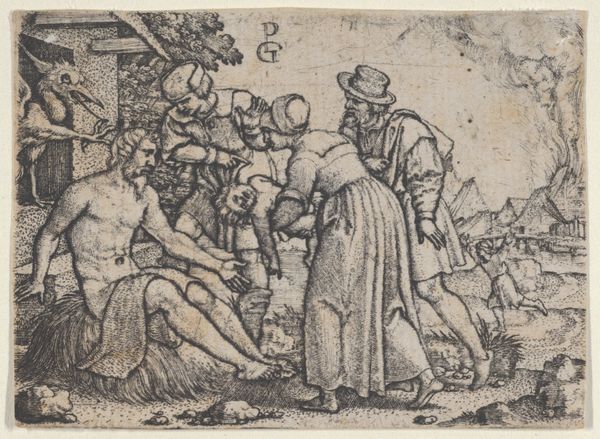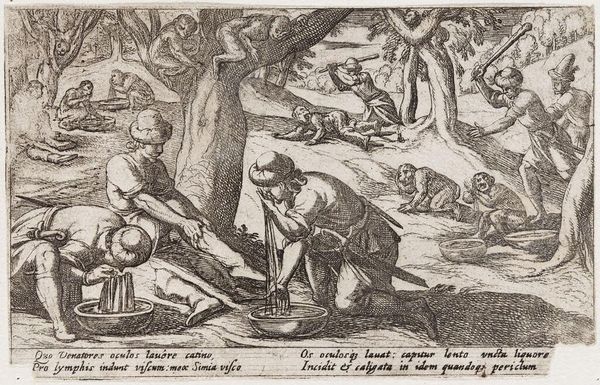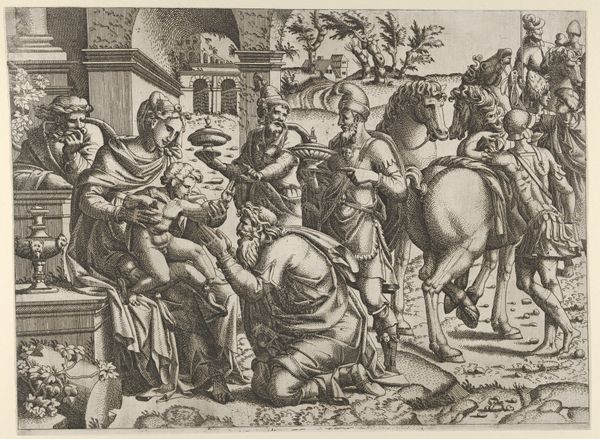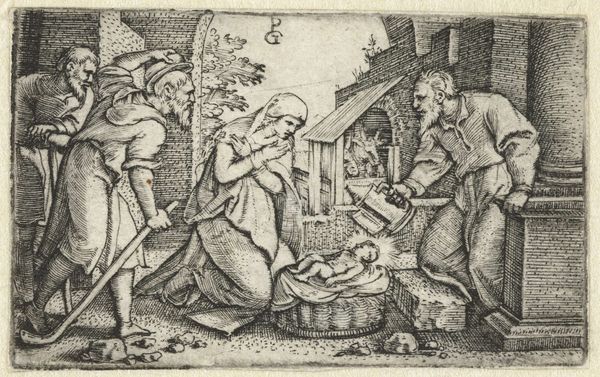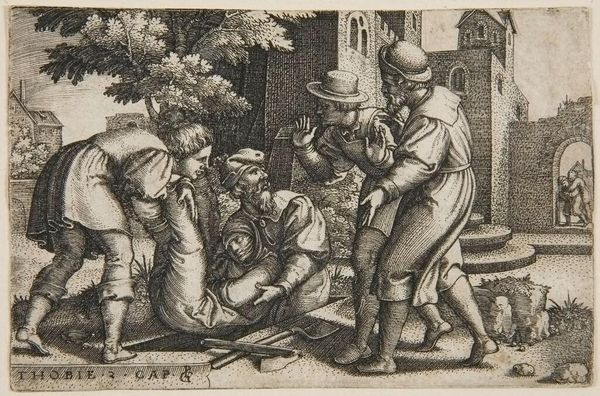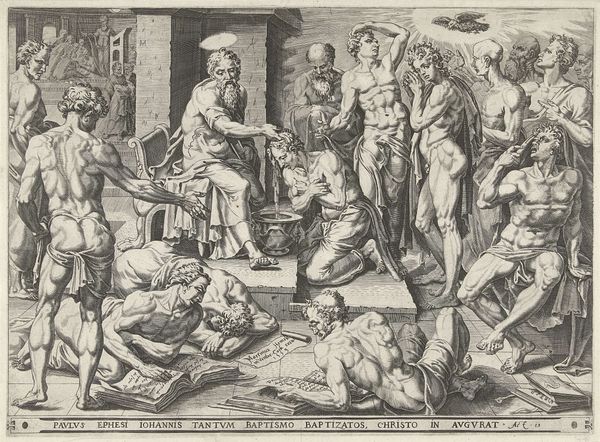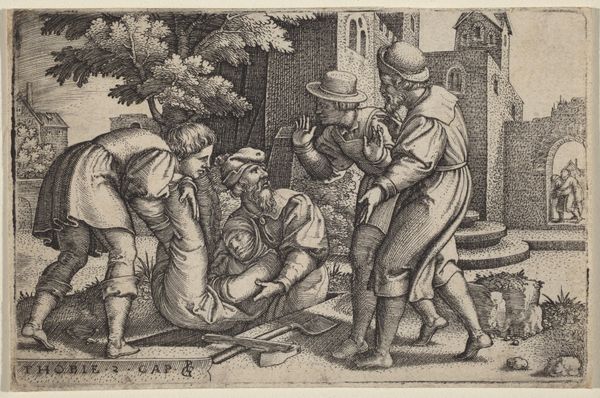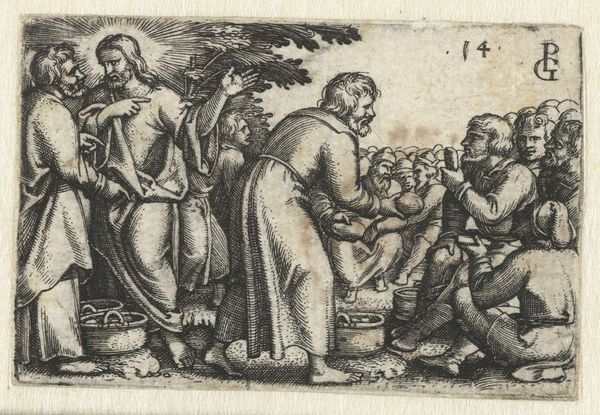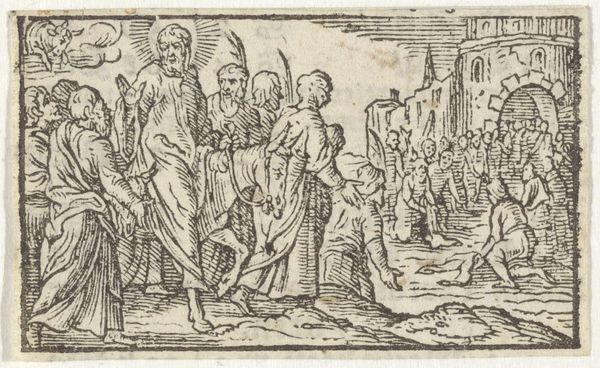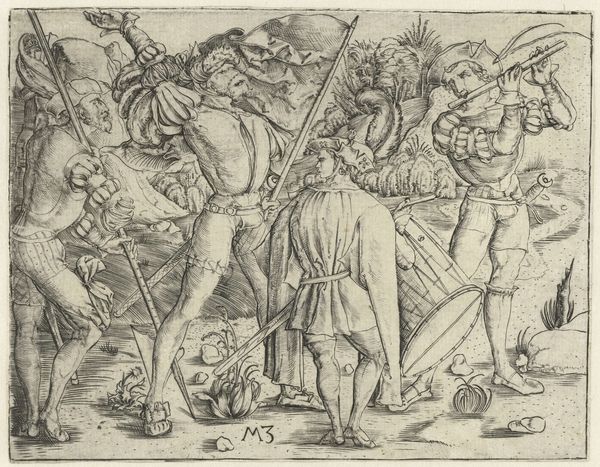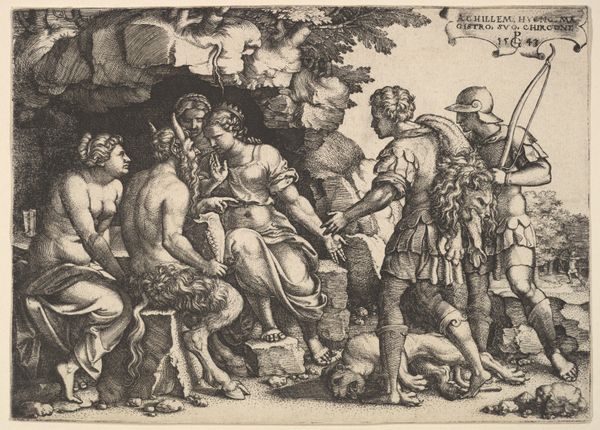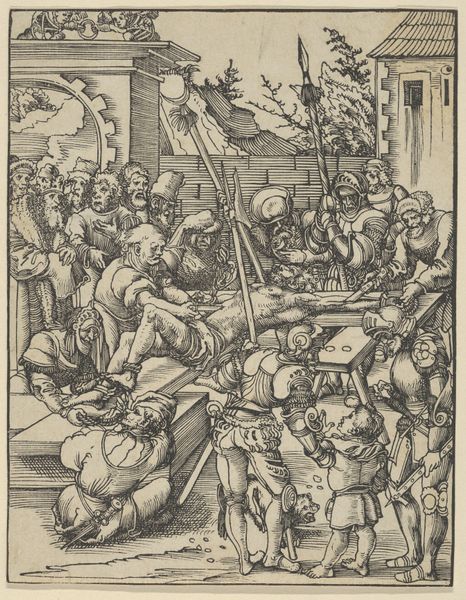
print, engraving
#
narrative-art
#
pen drawing
# print
#
landscape
#
figuration
#
line
#
history-painting
#
northern-renaissance
#
engraving
#
realism
Dimensions: height 61 mm, width 85 mm
Copyright: Rijks Museum: Open Domain
Curator: Georg Pencz's engraving, "Job op de mesthoop," created sometime between 1544 and 1548, presents a complex scene before us. It's currently held in the collection of the Rijksmuseum. Editor: It strikes me as incredibly bleak, almost a vision of total societal collapse. The central figure seems utterly alone despite being surrounded by others who appear, frankly, grotesque. Curator: Precisely. Pencz, working during the Northern Renaissance, draws upon the biblical story of Job. The landscape in ruins behind them visually mirrors Job's personal devastation as the narrative unfolds. We see the destruction visited upon him in that background blaze. Editor: That strange bird-like creature hovering in the upper left, looming over the scene—is that a literal demon tormenting him, or some figural symbol? I get a powerful sense of judgment emanating from that single image. Curator: Absolutely, the figure is often interpreted as Satan or one of Job's afflictions personified. This adds layers of meaning—illustrating spiritual battles alongside Job’s very visible physical suffering. Northern Renaissance art did embrace symbolic devices more readily. Editor: I’m noticing now the figures surrounding Job; they're almost theatrically demonstrative in their sympathy or accusation, perhaps? But this heightens Job's isolation even further, creating that psychological tension, a powerful symbolic charge. Curator: Right, his friends visit, ostensibly to comfort him, but their presence underscores the depth of his despair. The engraving itself as a medium contributes; its linear precision brings a raw, almost visceral quality to the suffering on display. Editor: It is fascinating how Pencz manages to balance stark realism with symbolic representation; the narrative becomes both deeply personal to Job but universally applicable about endurance and questioning faith under duress. I can’t help but wonder how period audiences saw the figure of Job within contemporary society. Curator: Ultimately, I view Pencz's work as a moving visual contemplation on faith, doubt, and the human capacity for both profound suffering and resilience, all delivered with a technical mastery indicative of the era. Editor: Indeed. And the enduring impact lies in the engraving’s stark reminder that even in utter desolation, the core questions about human existence endure.
Comments
No comments
Be the first to comment and join the conversation on the ultimate creative platform.
